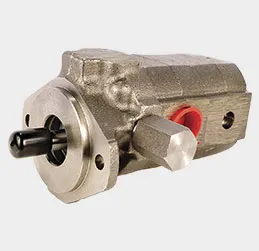custom aluminum sand casting
Custom Aluminum Sand Casting The Art and Science of Precision Manufacturing
Aluminum sand casting is a widely utilized manufacturing process in which molten aluminum is poured into a sand mold to create custom-designed parts. This technique not only allows for intricate shapes and complex geometries but also offers the flexibility to produce individual parts or large batches at competitive costs. In this article, we will explore the various aspects of custom aluminum sand casting, including its advantages, process, applications, and quality control measures.
The Advantages of Aluminum Sand Casting
One of the primary benefits of aluminum sand casting is its versatility. Sand molds can be easily shaped and modified to accommodate different designs, making it an ideal choice for custom applications. Unlike other casting methods, such as die casting, sand casting does not require expensive tooling, thus significantly reducing initial setup costs. This affordability makes aluminum sand casting particularly appealing for small to medium production runs.
In addition to cost-effectiveness, aluminum sand casting provides excellent thermal and electrical conductivity. Aluminum is known for its lightweight properties, meaning that parts produced through this method are often lighter than those made from other materials, resulting in reduced transportation and installation costs. Moreover, the casting process enables the incorporation of complex internal features and cavities, which are often challenging to achieve with other manufacturing methods.
The Sand Casting Process
The aluminum sand casting process begins with the creation of a mold from a mixture of sand, clay, and water. The desired part design is typically modeled in reverse to form a two-part mold, consisting of the cope (top half) and drag (bottom half). Once the mold is prepared, it is compacted to ensure that it can withstand the pressure of the molten aluminum.
Next, molten aluminum—heated to temperatures around 1400°F (760°C)—is poured into the mold cavity. After cooling and solidifying, the mold is removed, revealing the cast part. Post-casting processes may include trimming, machining, or surface finishing to achieve precise dimensions and desired surface quality.
custom aluminum sand casting

Applications of Custom Aluminum Sand Casting
Custom aluminum sand casting is employed across various industries, including automotive, aerospace, marine, and consumer goods. In the automotive sector, it is common to find engine blocks, transmission housings, and other intricate components produced through sand casting. The aerospace industry benefits from lightweight aluminum parts that adhere to strict safety and performance standards.
Moreover, custom aluminum sand casting is often used in producing artistic and decorative items. Sculptors and designers appreciate the flexibility of this process, as it allows for bespoke pieces that can be tailored to individual specifications.
Ensuring Quality and Precision
To maintain high-quality standards in custom aluminum sand casting, manufacturers implement rigorous quality control measures. The casting process is closely monitored to ensure consistent temperature, pouring techniques, and mold integrity. Non-destructive testing methods, such as radiographic inspection and ultrasonic testing, are employed to detect internal defects that may compromise the part's performance.
Additionally, manufacturers often rely on computer-aided design (CAD) software to optimize the design and simulation of the casting process. This ensures that potential issues are identified and rectified before production begins, leading to enhanced precision and reduced lead times.
Conclusion
Custom aluminum sand casting represents a harmonious blend of art and science in manufacturing. Its versatility, cost-effectiveness, and ability to produce complex shapes make it a preferred choice for many industries. By continually refining processes and implementing stringent quality control measures, manufacturers can ensure that they meet the evolving demands of their customers while delivering high-quality aluminum cast products. As industries strive for innovation, aluminum sand casting will remain a cornerstone of precision manufacturing.
-
OEM Sand Cast Pump Valve Fittings - Baoding Hairun Machinery And Equipment Trading Co., Ltd.NewsJul.31,2025
-
OEM Sand Cast Pump Valve Fittings - Baoding Hairun | Precision Engineering, CustomizableNewsJul.30,2025
-
OEM Sand Cast Pump Valve Fittings - Baoding Hairun Machinery And Equipment Trading Co., Ltd.NewsJul.30,2025
-
OEM Sand Cast Pump Valve Fittings - Baoding Hairun Machinery And Equipment Trading Co., Ltd.NewsJul.30,2025
-
OEM Sand Cast Pump Valve Fittings - Baoding Hairun Machinery|Precision Engineering&Fluid ControlNewsJul.30,2025
-
OEM Sand Cast Pump Valve Fittings - Baoding Hairun Machinery And Equipment Trading Co., Ltd.NewsJul.30,2025















